Interest in Shipping Container Homes has blown up in the last three years, and it’s completely understandable when you look into the phenomenon more closely. Are they the next barefoot boho obsession or just a flash in the architectural pan? I’ve compiled the definitive guide to everything you need to know about Container Homes and Container Conversions which will help us sort out the facts from the fiction.
From the ultra-rustic outer façade of a “is it a container or is it a house?” cabin in the woods to a massive, space age-looking container home constructed using 31 units, there is a shipping container home out there to suit every lifestyle and taste level. Another huge appeal factor for me, besides the incredible versatility and range a container home offers the developer/owner, is the safety and cost-effectiveness aspect.
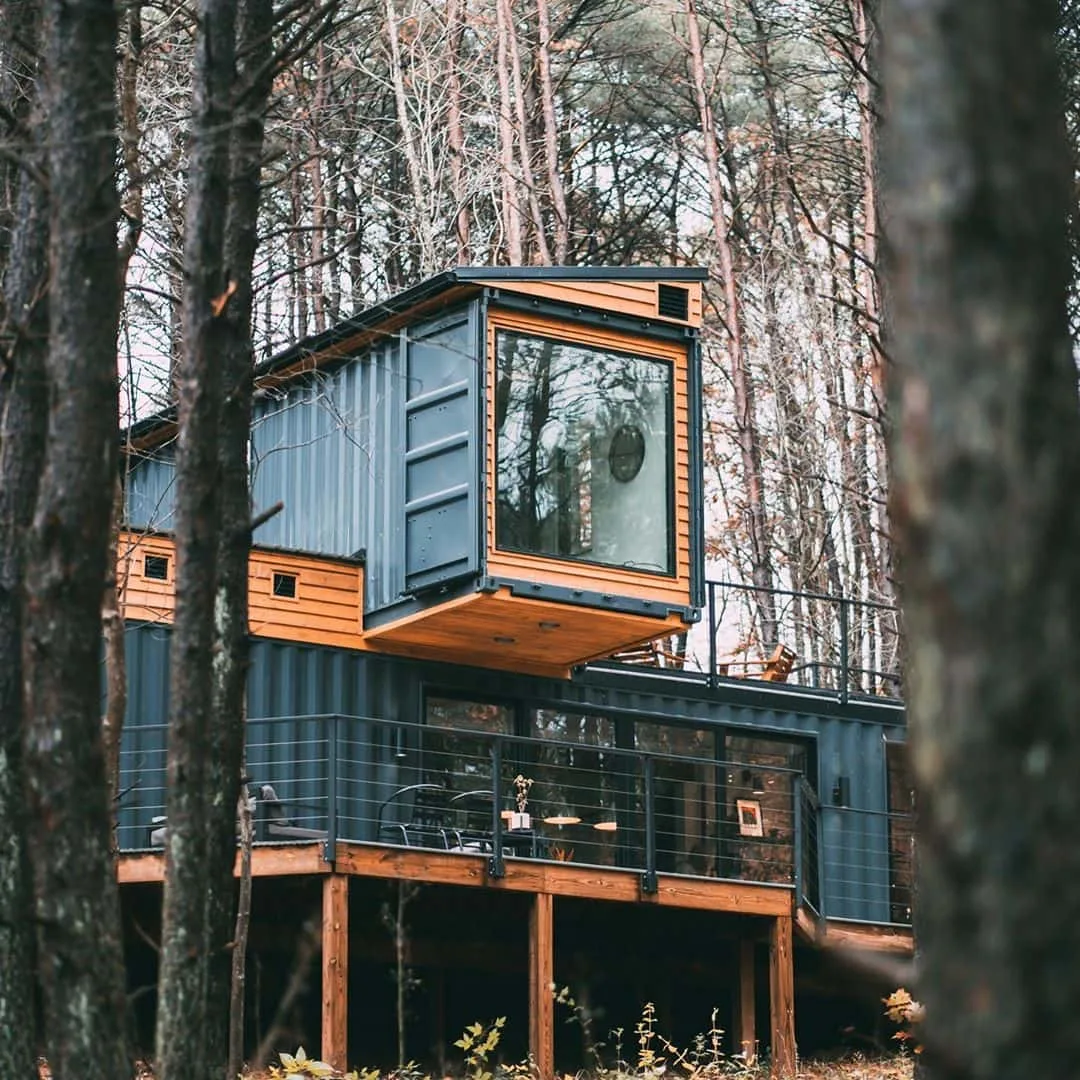
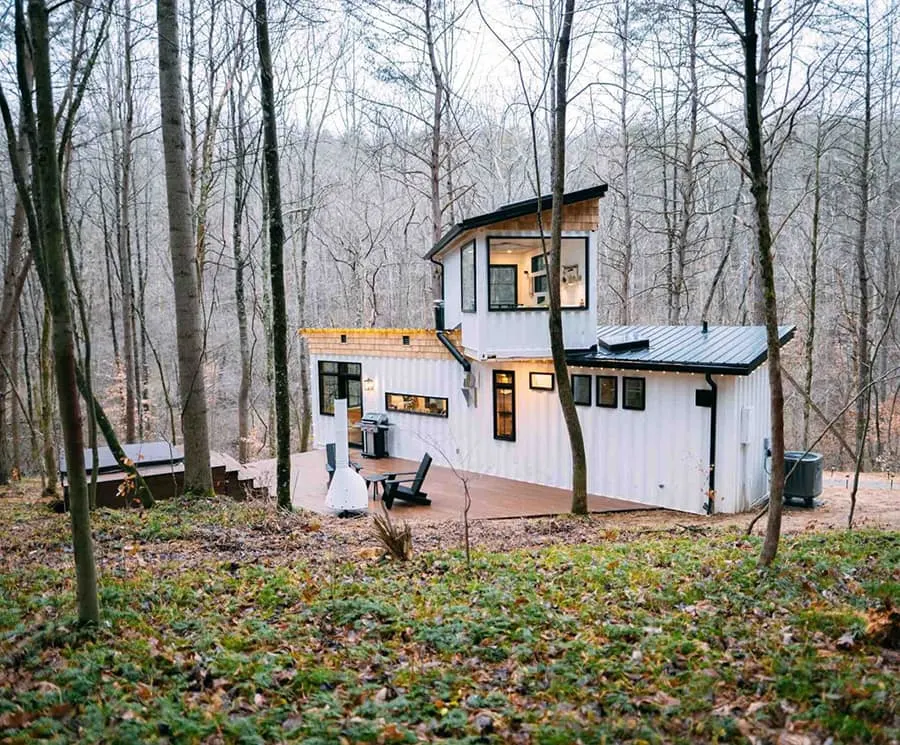
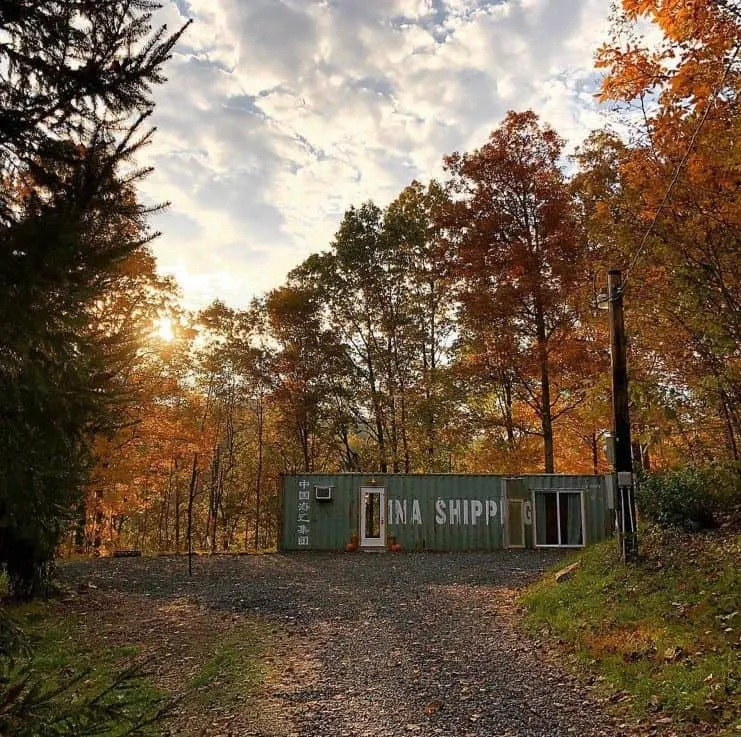
Architecture + Cargo Carrier Units = Cargotecture
While homes constructed out of container units are a relatively new idea on the architectural landscape, prefab homes are definitely not. Prefabricated house DIY kits were being sold from the Sears catalog in the early 1900s, and back in the 1600s settlers were having components for pre-made homes shipped over from England. Shipping container homes tap into the home kit sector fanbase very neatly.
Another design and build housing sector that has experienced a recent explosion in the popularity stakes is The Tiny House market. In a knee-jerk reaction against the bourgeois architectural inclination to associate bigger with better, tiny homes are popping up all over the place in opposition.
A beautiful blending of cargo carrying units and architecture to create Cargotecture takes a page from each of these housing trends’ playbooks in its own niche market. I think the range of housing options is all the richer for it.

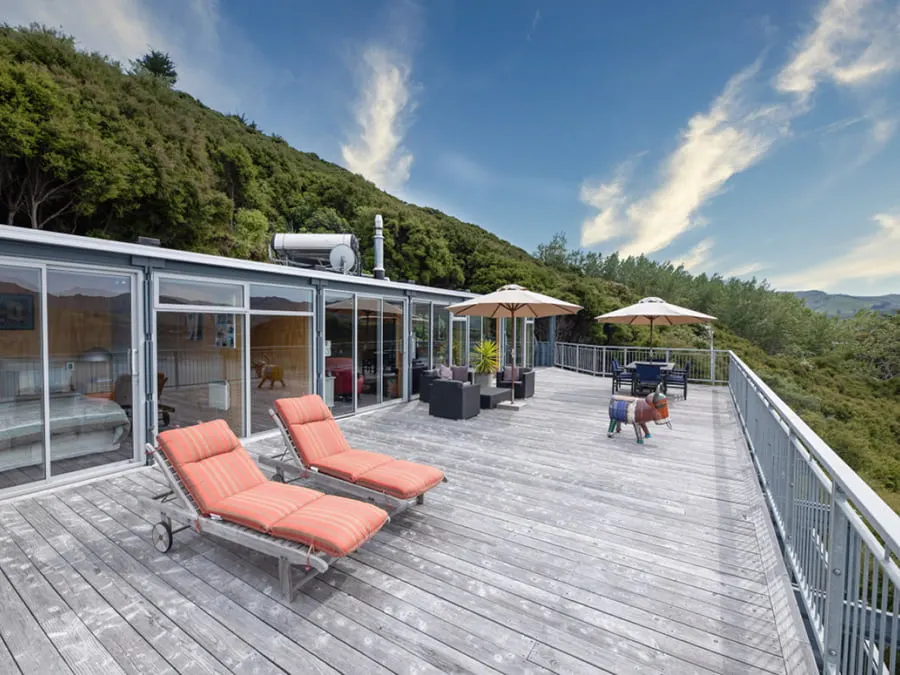

From Shipping Container to Home: A Brief History
It’s easy to forget the impact using shipping containers as construction elements have had on the housing industry. I dug a little deeper to find out how and why the idea for turning containers into homes came about in the first place.
Firstly, the U.S. imports more goods into the country than it exports out. A quick look at the numbers shows that around 5 million 20-foot shipping containers are left unfilled and lying around U.S. ports every year. Most of them are transported back to Asia, but recycling (melting down) all the surplus containers was just not a cost-effective action. What to do?
I tracked down the first recorded instance of container conversion all the way to the patent office. A genius gentleman called Phillip Clark staked his patent claim to convert one (or more) steel shipping container/s into a house in 1987. He outlined that the container would require a weight-bearing foundation as well as a bunch of other adaptations, but when his patent was granted over two years later, it was wholeheartedly approved.
In 1962, the Insbrandtsen Company filed a patent to use shipping containers as buildings, and in the 1970s, a British architect wrote a thesis on the subject. But the “shipping containers as homes” brainchild belongs to Phillip Clark.



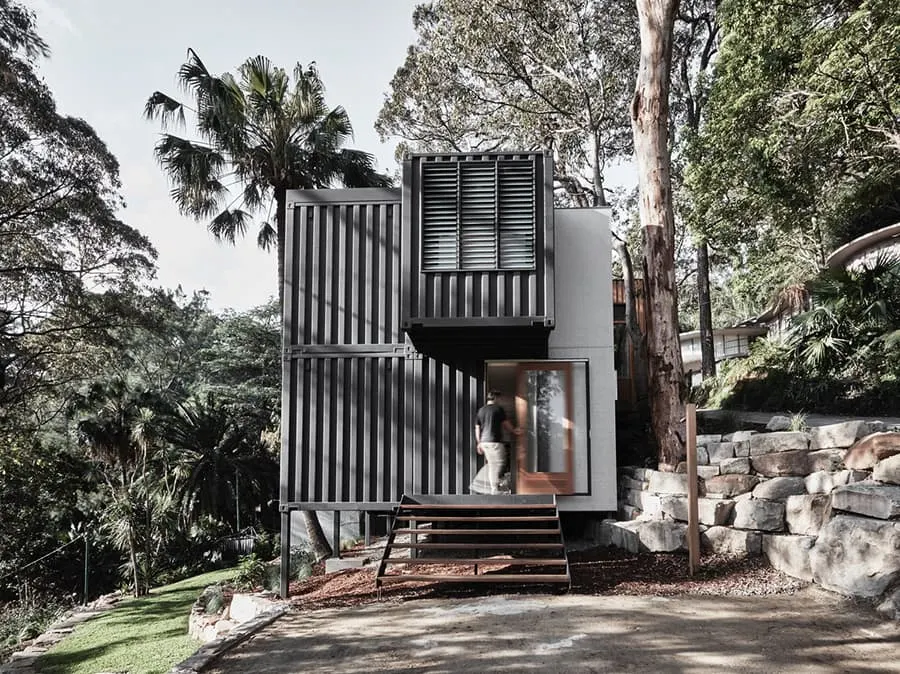
Shipping Container Homes on the Big Screen
Phillip Clark may have gotten his idea from a movie. The set designer for the film “Space Rage” (1985) used shipping containers to create a faux prison planet set in the 22nd century. A memorable container conversion set design was more recently used for the Matt Damon movie, “Downsizing” (2017).
If I was a set designer driving past a shipyard port, I would definitely be inspired by the rows and columns of shipping containers brightly decorating the roadside view!
Shipping Container Conversions: Are They Safe to Live in?
There are three valid concerns raised by container home newbies:
- Are they safe during severe weather conditions?
- Are the container’s interior materials safe to breathe, touch, and live in?
- Are container holiday homes secure to lock up and leave?
Guaranteed, container homes are very affordable and incredible to look at, but safety comes first for any family. So, I’ve done some digging to find out the answers to the above questions for you.
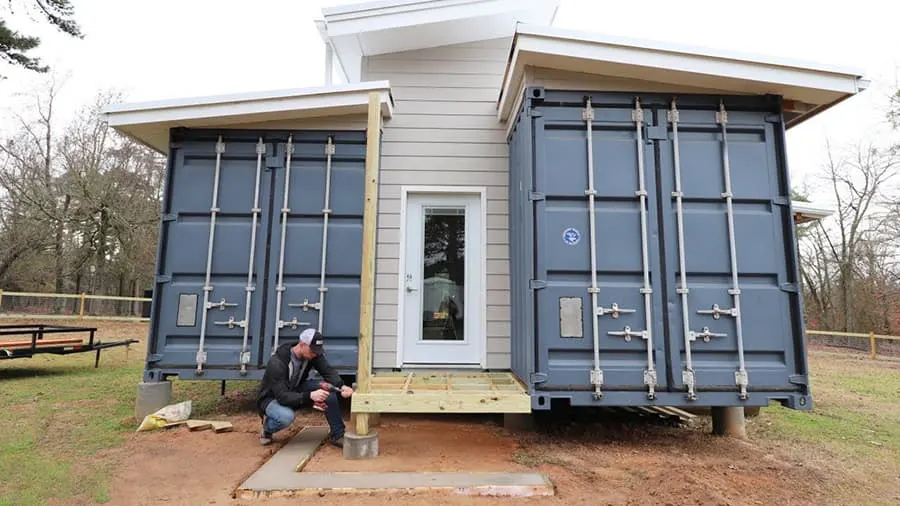
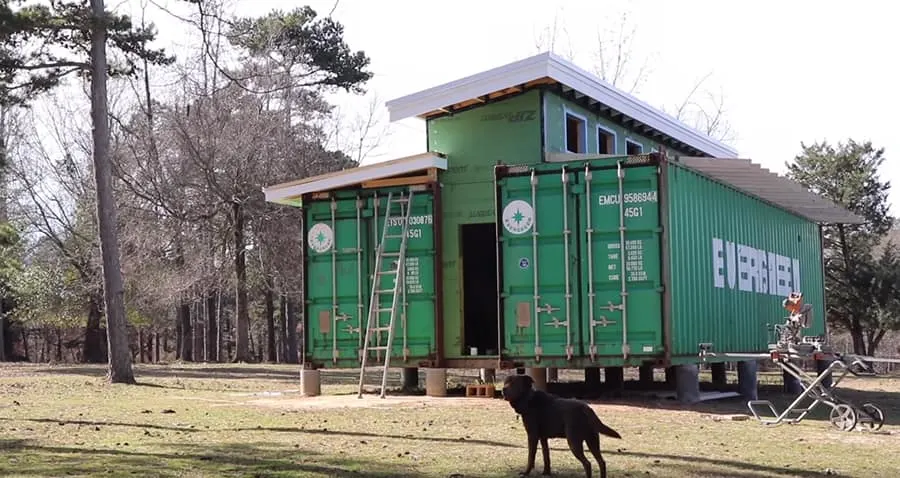
1- Are Shipping Container Homes Safe During Bad Storms, Floods, and Other Disasters?
Shipping container conversions are safer than houses! A container has a unique unibody structure that can withstand seismic events and tornados. This is because of the building industry-approved, fortified foundation steel anchoring, and code-engineered production and installation with which every container house is constructed.
If you are using a cargo shipping container specialist for your complete home-build package, they are sure to transport your new home with the appropriate gear and lay it on a strong and durable foundation. Once they’ve done that, the container home is locked in there with stainless steel fittings (the fittings are removable if you want your container home to be transportable).
One of the best structures to live in a natural disaster-prone area is a container conversion. A wooden or prefab home would be completely wiped out during a flood or a hurricane. However, a container is built to withstand the forces and stresses of multiple 26-tons containers stacked on and around them, so a hurricane would feel like a breeze compared to that.
If you are worried about internet images of shipping containers blown over by freak weather conditions, remember the containers in the pictures are all intact and weren’t bolted down by steel fittings.
A good example of a completely weatherproof converted container home is one of Cargotecture’s brightest stars – The Graceville House from the Australian version of Grand Designs. The home’s foundations are 9 meters/30ft deep micro-pile, and the piles are capped with concrete pillars with the containers anchored on top of them.
The Graceville Container House building plans were approved by local authorities because they were so weatherproof – unlike the owners’ previous brick and mortar home that had been washed away in a flood.

2- Are Used Container Interiors Treated with Chemicals?
In one word – yes. The wooden floor of a shipping container will have been sprayed with pesticides. Additionally, some of the paints used to coat containers could contain chromate and phosphorous. Obviously, if you build a container home there are several ways to get around these drawbacks.
If you are buying and building using a new shipping container, it won’t have been treated or coated with anything because it hasn’t been traveling around the oceans. The only ship it will have been on is the boat that brought it over from Asia. You can add specifications to your order stipulating they don’t use hazardous paint or treat the floors.
There are two main problems with ordering and building a new shipping container:
- it costs more
- it negates the environmental benefits of up-cycling an old container.
So, most families choose to work around the floor and paint problems.
3- How to Fix Harmful Elements Inside Your Second-Hand Container
Second-hand shipping containers have usually been previously treated with chemicals, sealants, and paints unsuitable for humans. All used containers are originally built to withstand continual exposure to ocean spray and fluctuating temperatures while protecting the non-biological contents inside.
It’s possible to contact the container’s original manufacturer, via its individual identification number, and ask them for all the fabrication information.
Paints and Coatings: If your manufacturer informs you the container is coated with toxic paint and gives you the details on which paint was used, you can have the paint removed or cover it up with non-toxic paint. This is easy to do using insulating spray foam and any of the organic paint ranges on the market.
Flooring: Cover the flooring completely with a non-breathable (groundsheet or polythene underlay) flooring underlayment. When this is laid over the original container flooring, you can then position the flooring material of your choice on top. If you still have concerns about the possibility of off-gassing, you can remove the used container flooring completely and replace the whole thing.
4- What About Security When You Want to Lock Up and Leave Your Container Home?
Creating a lakeside or woodland forest getaway container cottage is a popular thing to do. If you have security concerns about leaving your conversion cabin uninhabited for long periods, there’s really no reason to worry.
Remember what your container was originally meant to do: exporters would lock their shipping container’s loading/access door once the contents had been stacked inside. This forms an airtight, absolutely impenetrable storage area that remains unbroken until the container reaches its destination.
For security, you can leave the container’s outer original structure intact, and fit the doors and windows behind it. In this way, you can leave your container home alone for as long as you like and it will be sealed up safely. Just keep the container door open during the occupation to let in the light, and retrofit the doors and windows away from the original container door opening.



Shipping Container Homes: The Facts and the Fiction
When I was doing my research for this article, I had to keep in mind some of the “facts” presented by the occasional source that had a negative bias about container conversions were often fiction. In contrast, some of the information out there regarding container homes have clearly not done their homework; the words “too good to be true” describes some sites that are over-eager to sell container homes.
The facts I’ve gathered here are reliable and statistically proven. Here are some of the main ones:
1- Shipping Container Homes Are Budget-Friendly: Fact
Builders and homeowners love shipping container conversions because they offer the builder the opportunity to showcase their skills while saving the homeowner money. Container homes are cost-efficient with:
- Structural materials and basic construction
- Weather-proofing
- Exterior cladding
Building site estimates gauge these savings at around 40% in comparison to more traditional housing construction methods. Here are some of the possible cost breakdowns:
- Saving estimates of approximately $70 PSF (USD)
- 2 x 40ft containers cost less than $8,000 USD
- Some containers can be bought at bargain prices of $1,500 (check condition first)
- Construction time reductions of around 20%
2- Container Conversions are Strong and Durable: Fact
As I explain in the “Shipping Container Conversions: Are They Safe to Live in?” segment, the strength, and durability of container conversions are in no doubt. A container is built to withstand being surrounded by great forces, weights, and pressures, swung around by a crane, and trawled through the worst weather conditions imaginable. It’s safe to say that a container would laugh in the face of any disaster nature could throw at it!
When compared to structures made from concrete, wood, and steel components, a shipping container is going to win hands down every time. The proviso is, of course, that the container is rooted in the recommended foundations with the correct anchoring pylons.
Container conversions have been likened to cocoons. Hurl any weather at them, and they will emerge after the storm has passed like a butterfly leaving its protective casing. This includes seasonal weather variations in every climate zone.
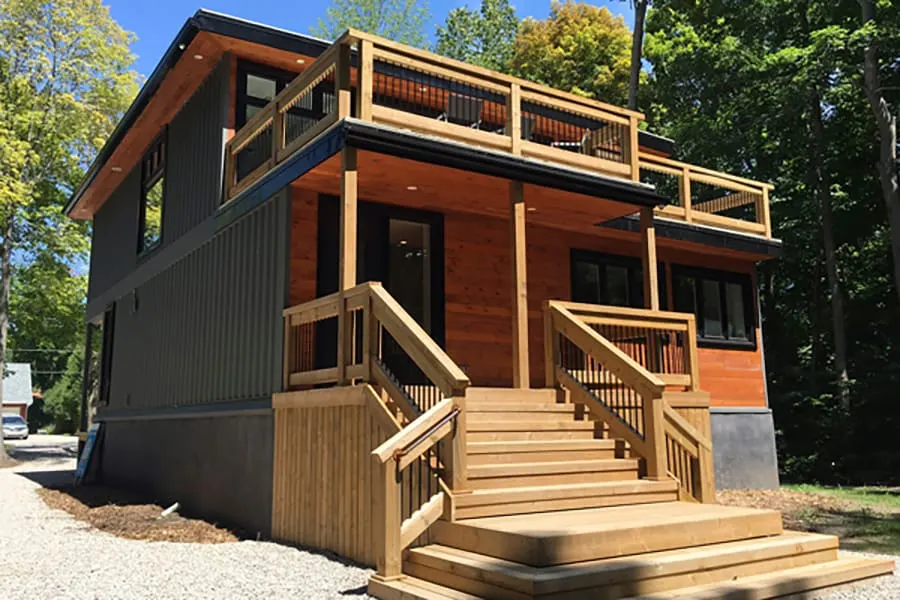
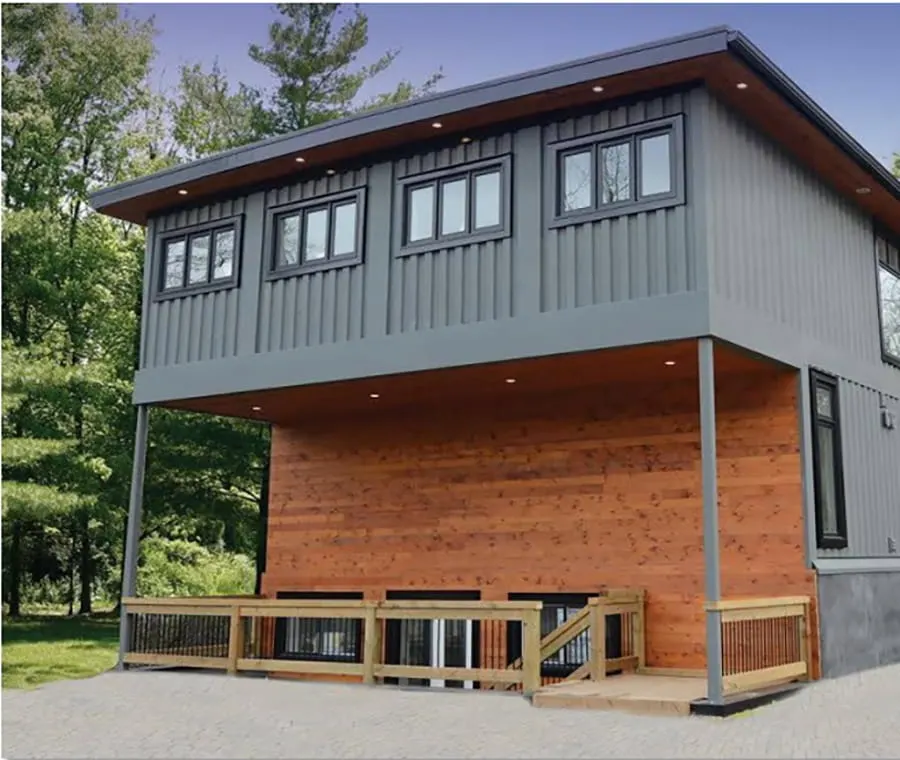
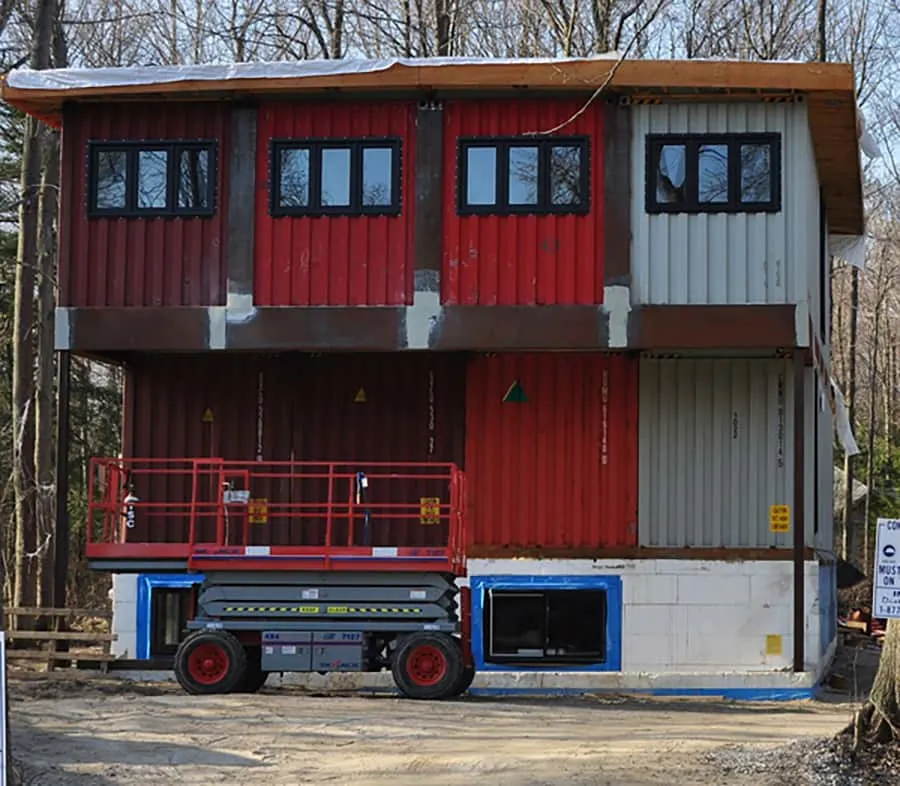
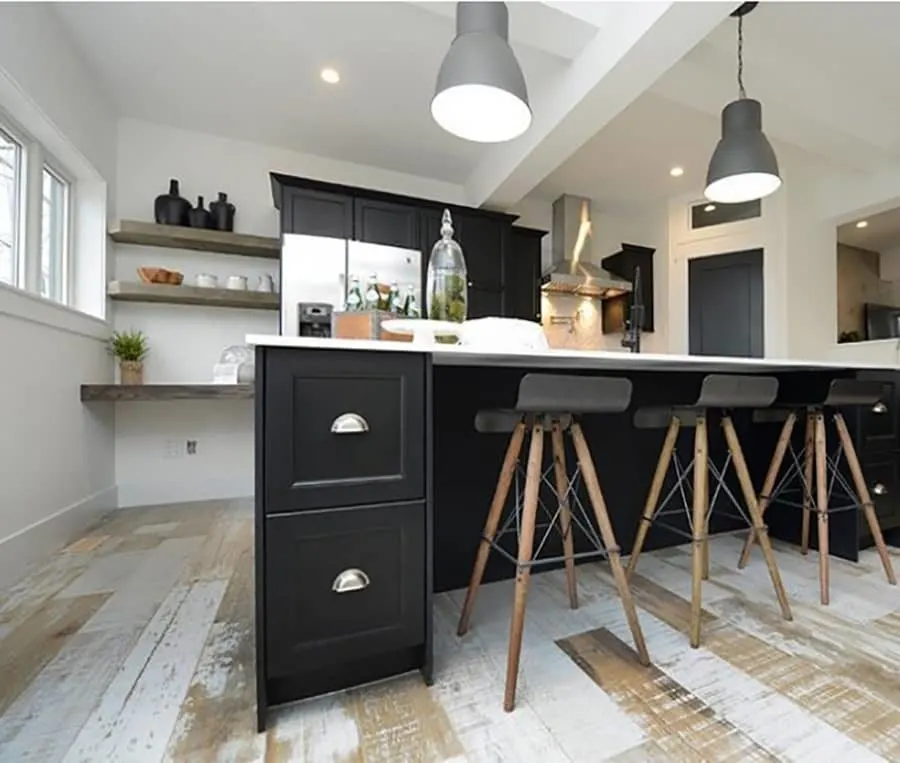
3- Container Conversions are Sustainable and Good for the Environment: Fact
There are so many decommissioned shipping containers in the world that there aren’t enough smelters to melt them down. New containers are being manufactured every day, and are only used for a maximum of 20 years before being left abandoned in a port dock.
Knowing this, it comes as no surprise that repurposing a container is a truly ecologically sound and green thing to do. Even new containers up-cycled to build homes contain 85% recycled steel. If any building constructed out of containers needs to be demolished (abandoned building site offices, training ground quarters, temporary accommodations), they are melted down and used to make new building materials.
4- Container Conversion Homes Are Cheaper to Build: Fiction
You have your land, and now it’s time to build the home of your dreams on it. The main word to keep in mind here is the Home of Your Dreams. If you haven’t got a container home vision in your mind, and dream about a wood or brick and mortar home instead, never allow someone to sell you on a different concept.
Some of the things that will add to any home’s price tag, no matter what it’s made out of, are:
- Square footage
- Fittings and finishes
- Location
- The time frame and deadline
- Architect and plans
- Challenging terrain
These factors will add to the cost of building your home, no matter what materials you choose to use.
As container homes lend themselves generously to cost-effective architectural decisions such as The Tiny Home and unpretentious building effects and layout, they do generally work out cheaper to build. If your dream container home involves three-story water features and a landscaped Japanese meditation garden, your house will cost more to build, no matter what materials you select to do it with.
What makes container homes so financially accessible is the fact they can be bought as a DIY project or as a livable unit ready for instant installation. There are even up-cycle, consumer-friendly businesses that offer container conversion plans for sale so that you can save on architect fees.
That’s what I find so appealing about many aspects of the container home sector, they are very helpful, thoughtful, and innovative when it comes to understanding how to save on building costs.
5- Building a Container Conversion Home is Easy: Fiction
There are two schools of thought when it comes to taking on the challenge of building your own container conversion (1) If you have a solid grasp of building work and medium expectations, go it alone, and (2) If you want a custom-built container home project, find a contractor.
You will also have the choice of hiring one contractor who can commit to handling the whole process or splitting the job with one contractor to modify the container, and another to do the interiors. Remember to ensure you have all the necessary building codes and regulations buttoned up before the building starts.
If you are ordering your container home from a delivery service, make sure it is up to code for your country and state. That means if you live in a hurricane zone, such as Florida, the house must have designated windows and shutters. Likewise, if you live in Australia or New Mexico, check the structure is fire code safe.
Hints and Tips for Container Conversion Budgeting
- Stick to your construction and installation budget.
- Don’t remove too much steel – positive space is as important as negative space in a container home structure.
- Try to see the container before committing to buying it.
- The best containers are the one-trip units – not the ones that have made multiple sea voyagers.
- If you are using more than one container, make sure every unit is from the same manufacturer.
Container home rentals and hotels in the US?
While researching this article I came across several shipping container houses that were for rent, the ones that caught my attention right away, so I knew that I had to share with you the account of @theboxhop from Hocking Hills, Ohio. They have two container homes that they rent using Airbnb the one below (white) is called The boho box hop and another one that I will share below (black exterior) would be their original Box hop.
You can check this gallery on their website where you can see all the images they have!

View this post on Instagram



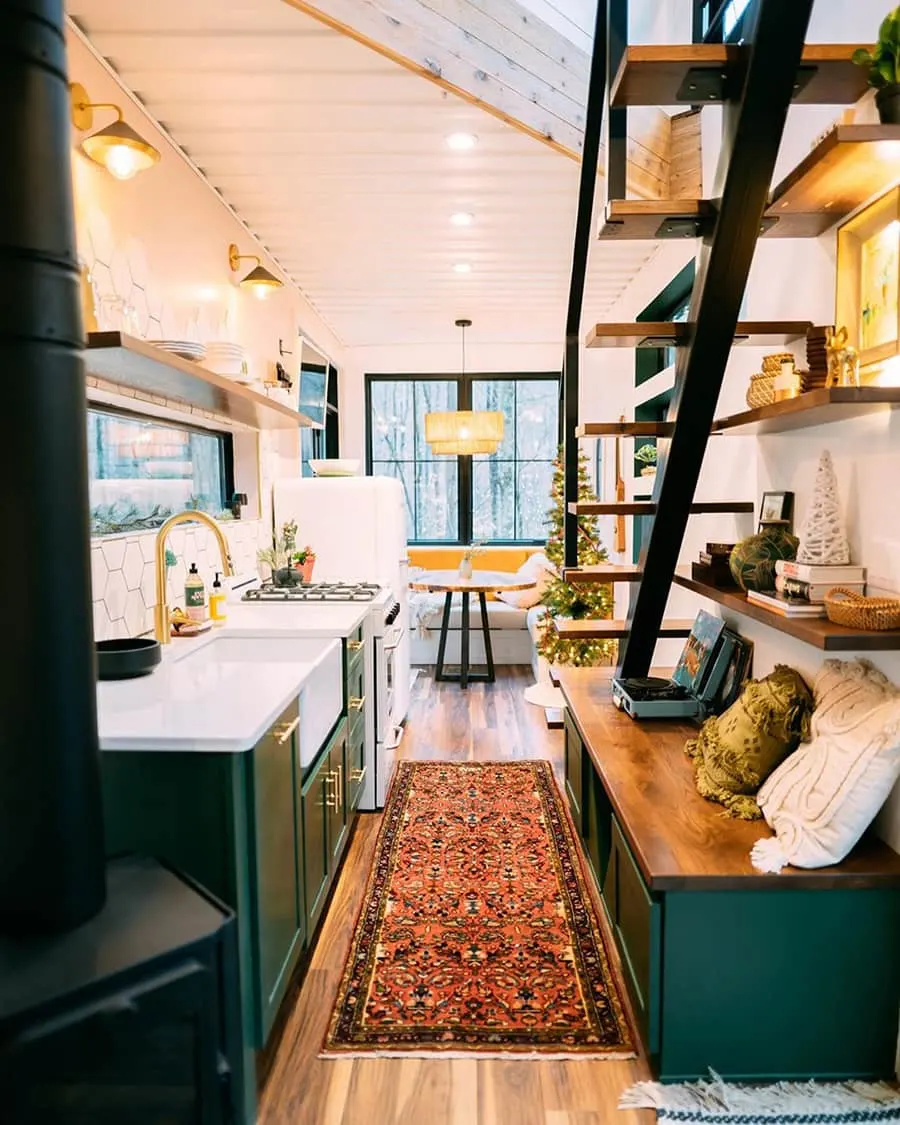

Theys second house is their original construction and it’s just breathtaking, look at everything by yourself below! and remember that you can stay in any of these houses =]
View this post on Instagram





Another fun AirBnb that I found is the one below, Located in Denver, Colorado. This unique custom shipping container home is 3000 sqft. It’s full of light & it has a large, custom kitchen. It has a unique atmosphere, comfort & privacy while sleeping many people. It has 25 ft ceilings in the great room, it feels grand and cozy. You can check out additional pictures and book it, right here.
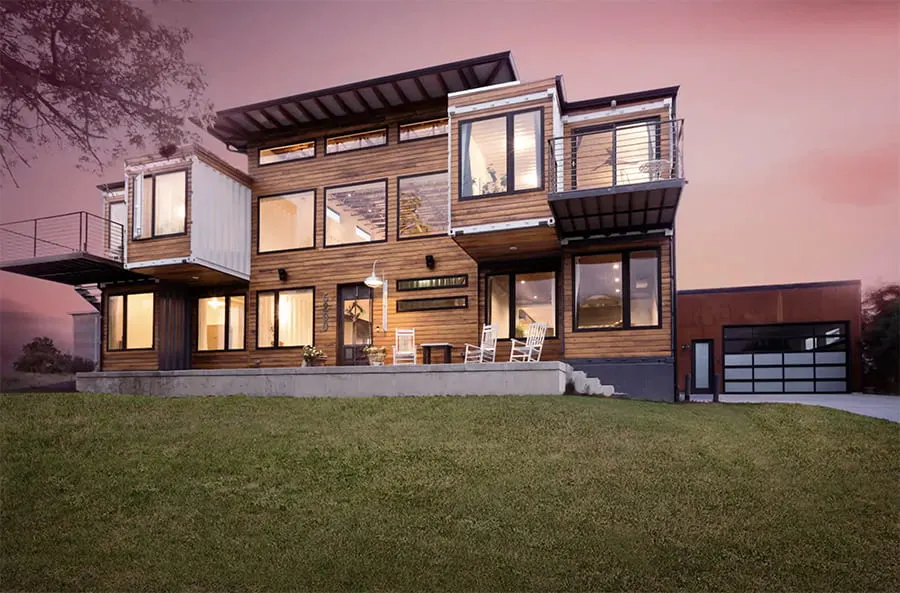




Another Airbnb that I had to share is this little single shipping container located in Texas, near Magnolia. It’s crazy how much cuteness is packed in such a little space. To book and check additional images check out their listing here.



While researching I came across several hotels made of shipping containers in Thailand, Brazil, and Korea, to name a few. But I had no luck in the USA until I came across Matt White’s container hotel The FlopHouze in Round Top, Texas. And I immediately added it to our bucket list. They have not only remodeled containers to make them look Insta-worthy, but they have taken their message of sustainability to the next level. If you have a chance, check them out!





And if you are in the market for a container renovation, they also offer that service, this is one of the many offered layouts.

Container Conversion Therapy
We want you to have the perfect container home experience, not a stressful time dealing with unknown county restrictions and permits. Just remember that not every area is container conversion-ready yet, and be open to making some design concessions.
Additionally, some banks will not finance or offer a home loan for container homes. There are banks that have eco-conscious home financing in place, and this is often your best way to obtain a mortgage.
Be ready to work closely with local councils or governments if you want smooth sailing. Some container homeowners I contacted told me they had conceded certain design elements they wanted in order to fit in with the established architecture and building codes. For example, some used impact glass instead of storm-shutters and painted their homes with muted exterior colors.
Many single-unit container homes don’t even require a building permit in some council areas, so get to know your zone’s application process beforehand.
Another main concern of some enterprising container-life couples was insulation and ventilation. Many sorted this out by adding double-ventilation on the roof and using solar power/renewable energy units for both heating and AC.
While I was writing this article, I set out to contact as many contented container conversion families to discover the best and the worst things about these homes. I am overwhelmed by all the advice they were willing to share so that anyone following in their footsteps can have an easier experience.
I found the information they provided for us very reassuring and ever so slightly tempting. As you probably know, I love and live the compact lifestyle, and finding out more about container homes made me realize this facet of home design is a beautiful extension of that.

Are you tempted by cargo-tecture? Where would your ideal container home location be?
Have a lovely day!

Ps. Save this post for later using the pins below.




Emily Bennette
Thursday 3rd of September 2020
I liked that you explained that shipping containers are affordable and fun to make into homes. It does seem like it would be smart to make sure that you get a durable container. After all, you don't want to worry about metal corrosion. Personally, I would want to buy a brand new container if I was going to turn it into a house.